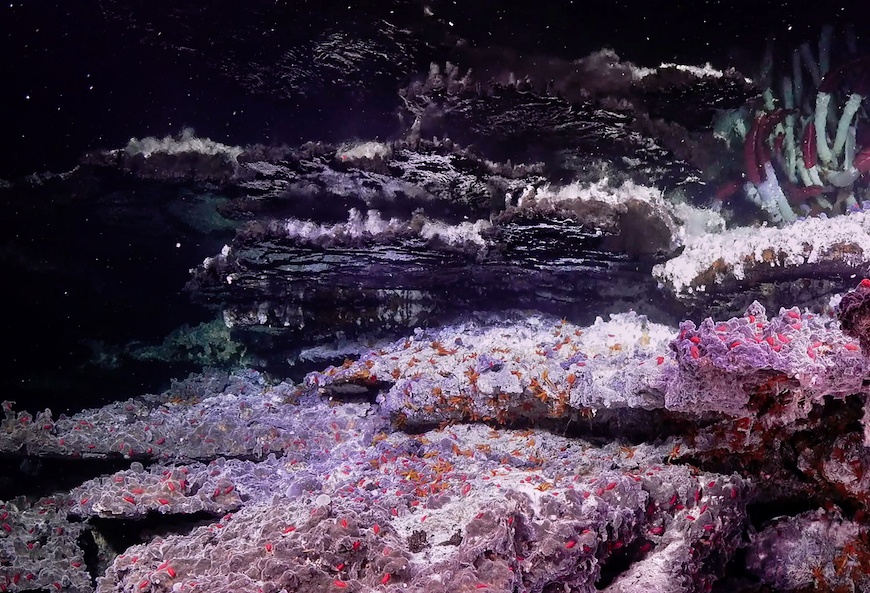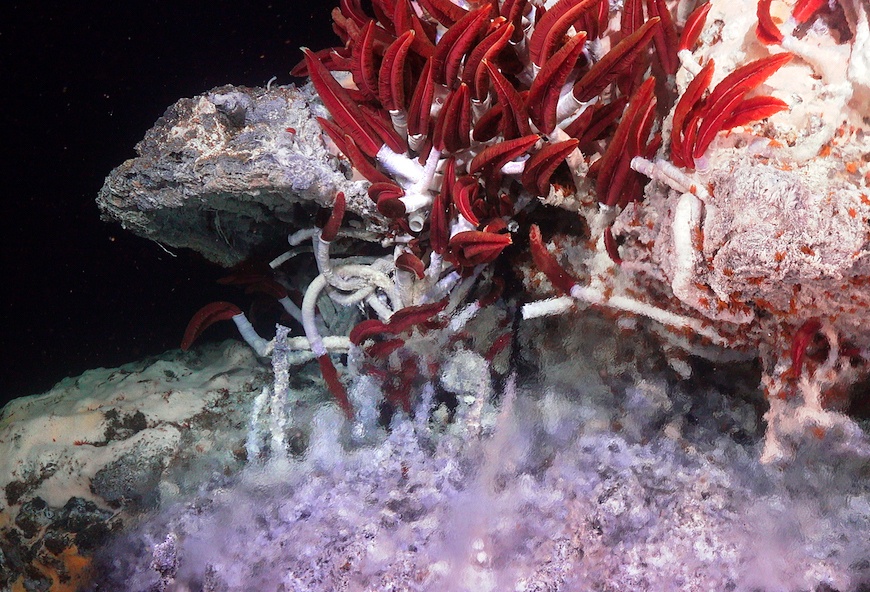Scientists Discover Otherworldly Mineral Towers Under Trash on the Ocean Floor

“We discovered remarkable towers where every surface was occupied by some type of life," said Samantha Joye, PhD, the University of Georgia scientist whose team discovered the geological and biological wonders, in a press release. "The vibrant colors found on the ‘living rocks’ was striking, and reflects a diversity in biological composition as well as mineral distributions." While exploring the otherworldly pillar, Dr. Joye's teams took samples of gas plumes and hydrothermal fluids to take back to the lab for testing. (Standby for more potentially mind-blowing discoveries.) As you'll see in the video below, the moment of discovery is breathtaking.
In the scope of scientific discovery, the underwater pillars are a pretty big deal (and really magical, to boot). "For me, one of the biggest questions is understanding how the structures support life and facilitate it," Dr. Joye tells Well+Good. "These are truly living structures—every exposed surface was teeming with life. Places like this have a tremendous amount to teach us about geobiology."
As if a monolithic rock formation the color of bubble gum isn't enough, the hydrothermal fluids beneath the volcanic plates creates a mesmerizing illusion dubbed a "mirror pool." When the fluid seeping out of hydrothermal vents gathers below each tier, it produces the chemical energy that makes the tower habitable for creatures like microbes and worms. "The colors are spectacular—bright pink, bright orange, bright yellow, purple. The Pagoda towers are a sight to behold. Truly magnificent, the scientist tells me.

Sadly, the unusual formation in the Gulf of California isn't immune to the plastic problem ravaging the world's oceans. "Unfortunately, even in these remote and beautiful environments we saw copious amounts of trash including fishing nets, deflated Mylar balloons, and even a discarded Christmas trees. This provided a stark juxtaposition next to the spectacular mineral structures and biodiversity," said Dr. Joye.

{{post.sponsorText}}
This story was originally published on April 17, 2019; it was updated on April 18, 2019.
For more natural phenomena, check out a remarkable blue-fire volcano and Texas' bluebonnets.
Loading More Posts...